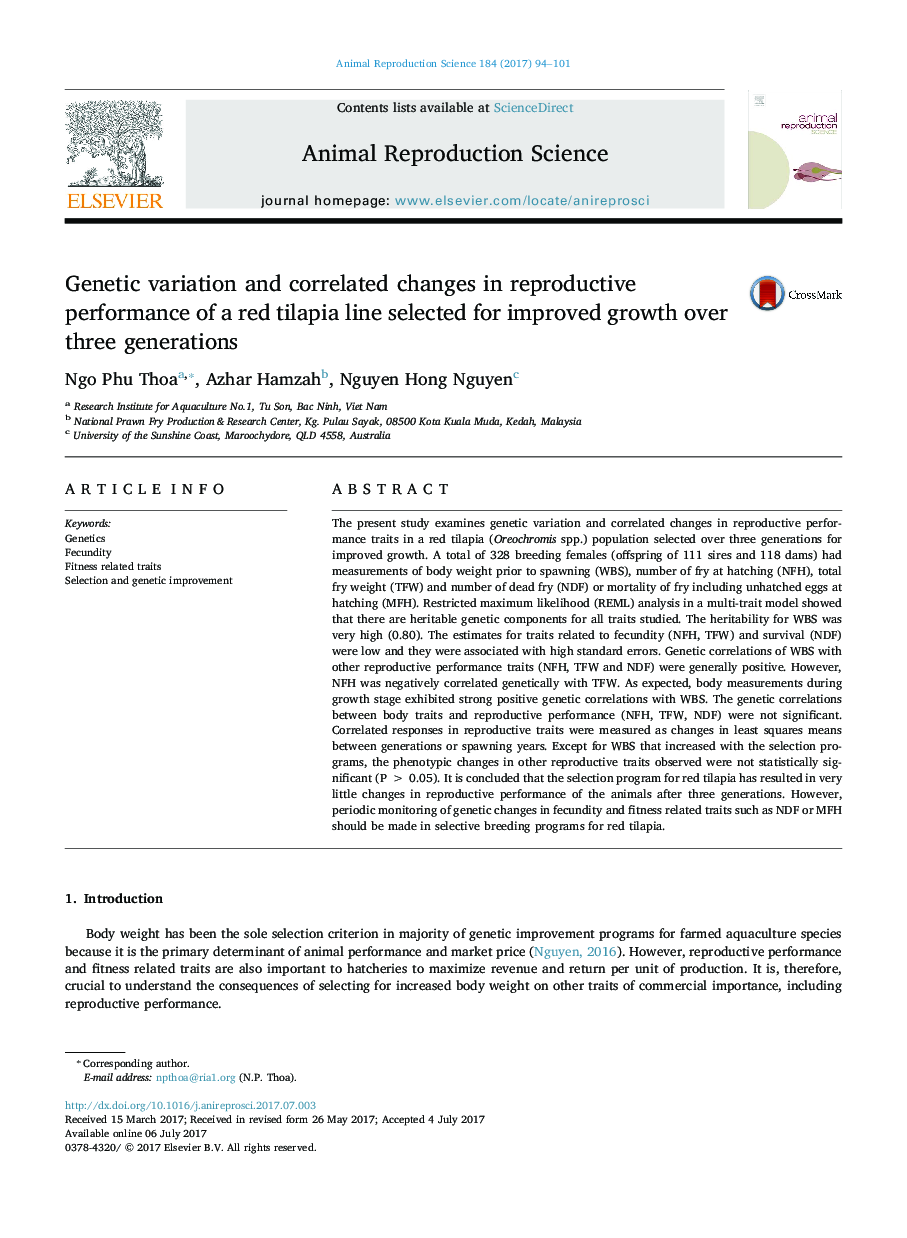| Article ID | Journal | Published Year | Pages | File Type |
|---|---|---|---|---|
| 5520232 | Animal Reproduction Science | 2017 | 8 Pages |
â¢Fecundity and fitness related traits of Red tilapia are lowly heritable.â¢Genetic correlations between body traits and reproductive performance were high and positive.â¢Short term selection for improved growth in the present study did not cause significant changes in reproduction productivity.
The present study examines genetic variation and correlated changes in reproductive performance traits in a red tilapia (Oreochromis spp.) population selected over three generations for improved growth. A total of 328 breeding females (offspring of 111 sires and 118 dams) had measurements of body weight prior to spawning (WBS), number of fry at hatching (NFH), total fry weight (TFW) and number of dead fry (NDF) or mortality of fry including unhatched eggs at hatching (MFH). Restricted maximum likelihood (REML) analysis in a multi-trait model showed that there are heritable genetic components for all traits studied. The heritability for WBS was very high (0.80). The estimates for traits related to fecundity (NFH, TFW) and survival (NDF) were low and they were associated with high standard errors. Genetic correlations of WBS with other reproductive performance traits (NFH, TFW and NDF) were generally positive. However, NFH was negatively correlated genetically with TFW. As expected, body measurements during growth stage exhibited strong positive genetic correlations with WBS. The genetic correlations between body traits and reproductive performance (NFH, TFW, NDF) were not significant. Correlated responses in reproductive traits were measured as changes in least squares means between generations or spawning years. Except for WBS that increased with the selection programs, the phenotypic changes in other reproductive traits observed were not statistically significant (PÂ >Â 0.05). It is concluded that the selection program for red tilapia has resulted in very little changes in reproductive performance of the animals after three generations. However, periodic monitoring of genetic changes in fecundity and fitness related traits such as NDF or MFH should be made in selective breeding programs for red tilapia.
